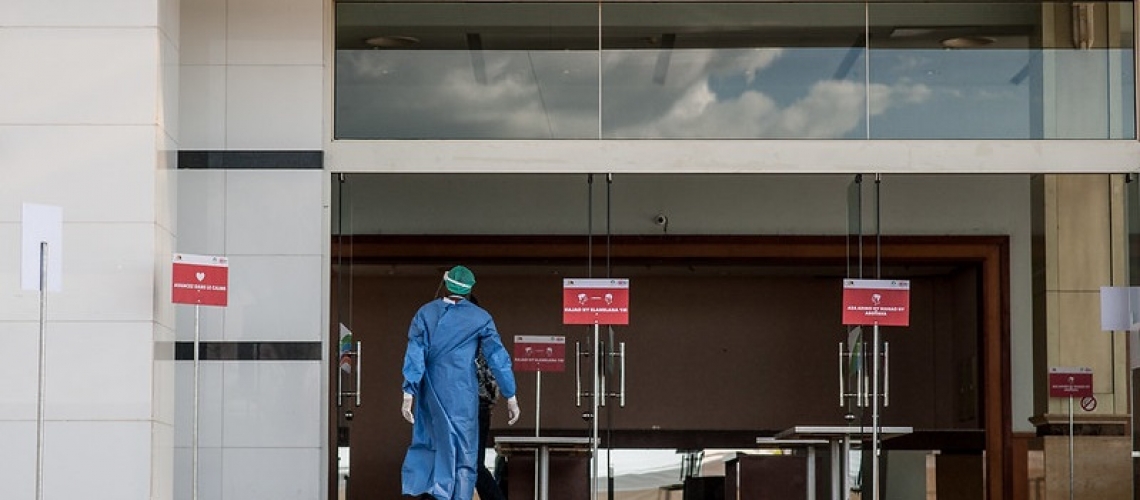How to manage governance and institutional risks related to COVID-19 vaccination

Person walks into a COVID testing center in Madagascar, wearing PPE
COVID-19 vaccines are scientific and technological marvels, but their distribution brings many institutional challenges. At nearly every stage, the public and private sectors, and how they work together, are being put to the test. The success or failure in getting large numbers of people vaccinated in a quick, equitable, and effective manner has enormous human consequences.
The World Bank’s recent paper on the Governance and Institutional Issues in COVID-19 Vaccination lays down the six major risk areas related to contracting, physical distribution, vaccine integrity, equity, and misinformation. Risks cannot be eliminated, but they can be mitigated through the following solutions:
- Transparency and Planning:
When vaccines do not reach the most vulnerable and instead get diverted to elites, citizens lose trust in government. Establishing and publicizing clear country-determined criteria for vaccine distribution and administration, with mandated, detailed and transparent record-keeping, can help minimize such risks.
- Open and Efficient Contracting:
The vaccine contracts are still largely done in a seller’s market, driven by the huge demand and need for universal coverage in the face of supply limitations. The multiple sources of financing involved coupled with requirements relating to each financing entity (donor, government, level of government, etc.), complicate the contracting process. Contracting openly and transparently can help mitigate the public procurement risks. Rewarding transparent producers and distributors of vaccines can incentivize positive behavior. It is equally important to strengthen the regulatory environment to prevent fraud and ensure the quality and integrity of vaccines.
- Appropriate Public Financial Management Systems:
Ensuring adequate budget provisions and mechanisms to facilitate payments towards the entire vaccination program expenditure, which may include costs beyond those relating to the vaccine itself, will guarantee timely and effective vaccine administration and distribution. Ideally, each country should put in place an internal control framework for the vaccine financing, procurement, logistics and management systems. Internal audits can provide oversight for vaccination-related finances and logistics.
- Utilizing Technology to Monitor:
Including sensors in vaccine boxes and geotagging them to trace their location at any given time and monitor their movement can facilitate distribution and reduce risks of misuse and leakages.
- Audit:
Supreme Audit Institutions (SAI) should be informed of all policy actions and plans relating to vaccines. SAIs should be ready to perform timely audit reports which can be considered by legislatures. Timely and high-quality audit products and review by legislatures ensures accountability and builds resilience for future emergencies.
- Citizen and Civil Society Oversight:
Providing regularly updated and credible data on vaccination rates and engaging civil society organizations (CSOs) such as medical associations, local welfare organizations, watchdog entities, faith-based organizations, etc., can help build trust. In some cases, governments (or development partners in consultation with governments) could fund CSOs to provide oversight and feedback on the targeting and administration of vaccines as well as the related expenditures
The COVID-19 vaccinations which have proven effective in containing the pandemic will remain center stage in most countries for several more months. The speed at which the world can see the end of pandemic, is now largely dependent upon our ability to mitigate the vaccination related risks through solutions rooted in governance and institutions.
